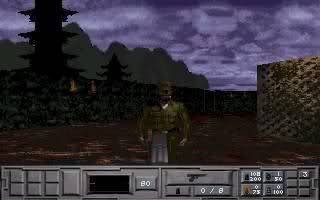Clint
Mecca V.I.P.
VIP
- Joined
- Jul 11, 2006
- Messages
- 5,886
- Points
- 38
It's a start.
WASHINGTON - A 28-mile "virtual fence" that will use radars and surveillance cameras to try to catch people entering the country illegally has gotten final government approval.
Homeland Security Secretary Michael Chertoff announced approval of the fence on Friday. The fence, built by the Boeing Co., uses technology the government plans to extend to other areas of the Arizona border, as well as to sections of Texas. The projects could get under way as early as this summer, said department spokeswoman Laura Keehner.
The virtual fence is part of a national plan to secure the southwest border with physical barriers and high-tech detection capabilities intended to stop illegal immigrants on foot and drug smugglers in vehicles. As of Thursday, 302 miles of fencing had been constructed.
Chertoff said the virtual fence already is working.
On Feb. 13, an officer in a Tucson command center - 70 miles from the border - noticed a group of about 100 people gathered at the border. The officer notified agents on the ground and in the air. Border Patrol caught 38 of the 100 people who tried to cross illegally, and the others went back into Mexico, said a Homeland Security official who spoke on condition of anonymity because he isn't authorized to speak publicly.
The virtual fence system includes 98-foot unmanned surveillance towers that are equipped with an array of sophisticated technology including radar, sensors and cameras capable of distinguishing people from cattle at a distance of about 10 miles. The cameras are powerful enough to tell group sizes and whether people are carrying backpacks that may contain weapons or drugs.
"I have personally witnessed the value of this system, and I have spoken directly to the border patrol agents who are involved in operating that system over the last few months and who have seen it produce actual results in terms of identifying and allowing the apprehension of people who are illegally smuggling across the border," Chertoff said.
Last year the government withheld some of Boeing's payments for the system because technology the company used in the test project did not work properly. Boeing also was late in delivering the final product, known as Project 28. Because of this, the department received a $2 million credit from the company to go toward maintenance and logistical support of the system, the Homeland Security officials said.
The government paid Boeing $15 million of its initial $20 million contract before determining that there were glitches in the test project. The department gave a conditional acceptance in December.
Lawmakers have been skeptical of the product Boeing delivered.
"This is not the end of the Project 28 story," Rep. Christopher Carney, D-Pa., said in a statement Thursday. "We need to understand what went wrong with Project 28 to ensure that the mistakes of the past are not repeated and taxpayer dollars are not squandered." Carney is chairman of the House Homeland Security management subcommittee





















